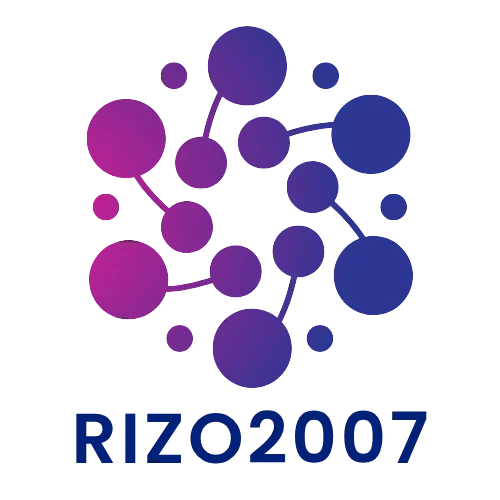Table of Contents
ToggleIn today’s fast-paced digital world, real-time communication has become essential for personal and professional interactions. Whether through instant messaging, video calls, or collaborative platforms, the ability to connect instantly transforms how people share ideas and solve problems. This immediacy not only enhances productivity but also fosters stronger relationships, breaking down geographical barriers.
As businesses and individuals increasingly rely on these tools, understanding real-time communication’s impact is crucial. It reshapes workflows, enhances customer experiences, and drives innovation. In this article, we’ll explore the various aspects of real-time communication, its benefits, and how it continues to evolve in the ever-changing landscape of technology.
Overview of Real-Time Communication
Real-time communication (RTC) refers to the exchange of information instantly, allowing participants to interact without noticeable delays. RTC encompasses technologies like instant messaging, voice calls, and video conferencing, facilitating seamless engagement across different devices and platforms.
Real-time communication enhances collaboration. Teams can share ideas, make decisions, and resolve issues quickly, which boosts productivity. Businesses employ RTC tools to improve customer service. Immediate responses to inquiries foster positive customer experiences, increasing satisfaction and loyalty.
Various sectors benefit from real-time communication. In education, teachers can engage students directly through live classes. In healthcare, professionals can consult with peers rapidly, improving patient care. The use of RTC in remote work environments promotes team cohesion, despite geographical distances.
RTC technologies evolve continuously. Advancements in internet speed and bandwidth enhance the quality and accessibility of communication tools. Innovations such as artificial intelligence further optimize real-time interactions, automating responses and providing insights into conversations.
| Technology | Features | Benefits |
|---|---|---|
| Instant Messaging | Text-based conversations | Quick exchanges of information |
| Video Conferencing | Face-to-face interaction | Visual communication enhances clarity |
| Voice Calls | Audio-only communication | Immediate, direct conversations |
| Collaboration Tools | File sharing, task management | Improved teamwork and project efficiency |
Real-time communication shapes modern interactions, redefining personal and professional dynamics. The integration of RTC in daily activities demonstrates its significance in fostering immediate and effective exchanges.
Types of Real-Time Communication

Real-time communication encompasses various forms, each tailored to specific contexts and needs. The following types represent the most common methods of engaging in RTC.
Voice Communication
Voice communication enables direct conversation through phone calls or VoIP services. Users can discuss matters instantly, enhancing clarity and reducing misunderstandings. For example, platforms like Skype and Zoom allow users to make high-quality voice calls over the internet. In business situations, voice communication facilitates urgent decision-making and immediate feedback. Its primary advantage lies in its ability to convey tone and emotion, crucial for effective interaction.
Video Communication
Video communication combines audio with visual elements, offering a more immersive experience. This format allows participants to engage in face-to-face meetings regardless of location. Applications like Microsoft Teams and Google Meet support remote work by creating a collaborative environment. Video communication enhances connection by fostering non-verbal cues, such as body language and facial expressions. It stands as a pivotal tool for team collaborations, virtual events, and online education, bridging the gap created by distance.
Instant Messaging
Instant messaging provides users with text-based communication in real-time. Platforms such as Slack and WhatsApp allow for quick exchanges, whether in work settings or casual conversations. This method promotes efficiency as it enables multiple conversations simultaneously and supports file sharing. Instant messaging often incorporates features like emojis and GIFs, adding an informal touch that can lighten discussions. Its flexibility suits various purposes, from quick updates to detailed project coordination.
Technologies Behind Real-Time Communication
Real-time communication (RTC) relies on various technologies to facilitate instant interactions across platforms. Two significant technologies that enable RTC are WebRTC and SIP protocol.
WebRTC
WebRTC (Web Real-Time Communication) enables direct peer-to-peer communication in web applications without the need for plugins. WebRTC supports audio, video, and data sharing, making it versatile for applications like video conferencing and file transfer. Key features include:
- Low Latency: WebRTC minimizes delays, crucial for real-time interactions.
- Browser Compatibility: It integrates seamlessly with various web browsers, including Chrome, Firefox, and Safari.
- Security: WebRTC employs encryption protocols to secure communication, ensuring user privacy and data protection.
WebRTC’s open-source nature fosters innovation and integration in platforms, contributing to extensive adoption in businesses and educational environments.
SIP Protocol
SIP (Session Initiation Protocol) handles the initiation, management, and termination of real-time communication sessions, particularly in voice and video calls. SIP protocol is fundamental for:
- Session Control: It manages session establishment and teardown, including registration and location of participants.
- Interoperability: SIP works across different networks and devices, promoting connectivity among diverse communication systems.
- Scalability: It supports numerous simultaneous sessions, allowing organizations to scale as needed.
SIP’s robust framework enhances communication reliability, making it a preferred choice for telephony and video solutions in enterprise settings.
Applications of Real-Time Communication
Real-time communication (RTC) plays a crucial role across various sectors, enhancing interactions and collaborations. Its applications extend into business, education, healthcare, and more, fostering engagement and immediate information exchange.
Business Collaboration
Business collaboration leverages RTC to streamline workflows and improve communication among team members. Tools like video conferencing and instant messaging allow teams to brainstorm ideas, share documents, and make decisions rapidly. For instance, platforms such as Microsoft Teams and Slack facilitate seamless dialogue, enabling quick feedback and keeping teams aligned on projects. The immediacy of RTC leads to faster problem-solving and more efficient project execution, which is vital for maintaining competitiveness in today’s market.
Online Education
Online education harnesses RTC to create interactive learning experiences. Educators utilize video conferencing tools like Zoom and Google Meet to conduct live classes, enabling real-time participation and engagement. Features such as screen sharing and breakout rooms foster collaboration among students, simulating traditional classroom dynamics. RTC also supports immediate feedback, allowing teachers to address student questions and concerns promptly. This enhances the overall learning experience and improves educational outcomes.
Challenges in Real-Time Communication
Real-time communication (RTC) presents several challenges that can impact effectiveness and user experience. Key issues include latency and security concerns.
Latency Issues
Latency significantly affects RTC by introducing delays in data transmission. High latency can disrupt fluid conversations and lead to misunderstandings. It’s measured in milliseconds (ms), and optimal latency for real-time interactions should remain below 150 ms. When latency exceeds this threshold, communication becomes less effective. Various factors contribute to latency, including network congestion, routing inefficiencies, and server response times. For instance, packet loss, which occurs when data packets fail to reach their destination, exacerbates latency problems. Implementing quality of service (QoS) strategies can help prioritize RTC traffic, enhancing the overall communication experience.
Security Concerns
Security remains a top concern in real-time communication due to the sensitivity of the information exchanged. RTC systems are vulnerable to threats such as eavesdropping, data breaches, and denial-of-service attacks. Encryption protocols, like TLS (Transport Layer Security) and SRTP (Secure Real-Time Transport Protocol), protect data during transmission. They ensure that only authorized users access sensitive information. Additionally, organizations need to enforce robust authentication methods to prevent unauthorized access. Regular security audits and updates are crucial in maintaining the integrity and safety of RTC platforms.
Future Trends in Real-Time Communication
Emerging trends in real-time communication (RTC) are reshaping interactions, enhancing efficiency and user experiences through advanced technologies.
Integration with AI
Integration with artificial intelligence (AI) transforms RTC by automating processes and personalizing user experiences. AI-driven chatbots handle customer inquiries instantly, reducing response times and freeing human agents for complex tasks. Natural language processing (NLP) improves voice and text interactions, creating more intuitive user interfaces, while predictive analytics identifies user needs and preferences, ensuring timely responses. AI algorithms analyze communication patterns, enabling businesses to optimize their RTC tools for better team collaboration and customer engagement.
The Rise of 5G
The rise of 5G technology significantly enhances RTC capabilities. With speeds exceeding 10 Gbps and reduced latency to about 1 ms, 5G enables seamless video calls and high-quality streaming. Increased network capacity supports numerous simultaneous connections, making it suitable for large-scale applications such as virtual reality meetings and real-time data sharing in professional environments. The low latency of 5G reduces interruptions, which improves conversational fluidity essential for effective communication. As 5G networks expand globally, businesses may leverage RTC technologies to create innovative and interactive customer experiences, pushing the boundaries of traditional communication methods.
Real-time communication is transforming how individuals and organizations interact. By facilitating instant exchanges of information, it enhances collaboration and fosters stronger relationships. The integration of advanced technologies like AI and 5G is set to further elevate RTC capabilities, making interactions even more seamless and efficient.
As businesses and educational institutions continue to adopt these tools, the benefits of RTC will become increasingly apparent. Addressing challenges such as latency and security will be crucial in ensuring a reliable communication environment. Overall, embracing real-time communication is essential for staying competitive in a fast-paced digital landscape.





